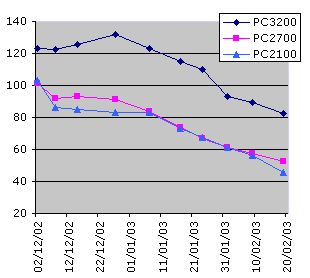I’m happy to say that spam isn’t usually too much of a problem for me. I get about half a dozen messages per day on my main sunpig address. That’s a manageable volume. Most spam is very easy to spot based on its sender and subject line, and hitting the “delete” key a handful of time just isn’t that much effort.
Nonetheless, it’s annoying that I have to. I try to be careful where I pass out my email address, and even though the sunpig web site features email links (click on my name at the bottom of each post, or on the page banner), they are obfuscated by some custom javascript. I don’t run around signing up for random mailing lists, or buying stuff from companies without opt-in/opt-out mail policies (although they’re not always worth the bits they’re encoded in).
This is where SAProxy comes in. SAProxy is built on SpamAssassin, which is generally regarded as one of the best spam filters around. I had looked at SpamAssassin last year, but I’d been put off by the fact that it ran under Unix (or Linux). And even while I was running Linux on my desktop last year, it seemed confusing and difficult to get set up effectively.
Not any more. SAProxy rolls up the SpamAssassin engine in a nice little package for Windows that sits between your email program and your mail server. Normally your mail client (Outlook, Mozilla Mail, etc.) contacts your mail server directly to download its mail. SAProxy adds a proxy layer into the mix: your mailer speaks to the proxy, and the proxy contacts your mail server. When your mail is downloaded, the proxy runs all of it through the SpamAssassin filters. If it finds any spam, it adds the text “*****SPAM*****” to the subject line of the message. Then all you have to do is tell your mailer to automatically shunt all messages with this text into a junk folder. Every now and then you can quickly run through this folder to make sure that it hasn’t accidentally tagged any non-spam, and bulk delete the rest.
It’s very easy to set up, and it works with most modern mail programs under Windows. I installed it yesterday, and so far it has successfully caught all seven spam messages I received since then. It’s a small sample, but it looks very promising.
Ultimately, I would prefer a server-based solution, because the spam still does get downloaded onto my own computer. If the volume of spam were to increase, this could become a problem. But until then, it’s nice to have a clean inbox again.
